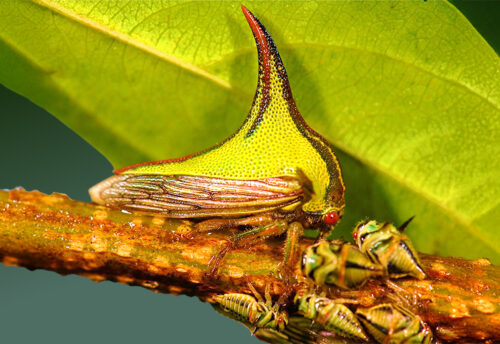
It’s a poopy job, but someone’s gotta do it. The dung beetle flies about in search of just the right pile of dung or pat. They will then settle in and get to work rolling the poop into neat little balls that are stored underground for dining on later. It’s a messy job that they are more than happy to partake in. Gives new meaning to pat on the back. Dung beetles can be found on every continent sans Antarctica. Just what are those little balls of poo used for? Why do they shape the dung into balls? Why do the eat poop? Glad you asked. Keep reading and find out more.
First the Stats…
Scientific name: Scarabaeinae
Length: Up to 2.5 inches
Lifespan: Up to 3 years
Now on to the Facts!
1.) First of all, not all dung beetles relocate the poop. Some live right there in the steaming pile of goodness. Some even dig burrows right below the pat and move the feces into the tunnels for safe keeping. Others indeed have no trouble building balls of stink and rolling them to a new location.
2.) They build with it, they nest in it, and they eat it. Mmmm, yummy!
3.) Dung beetles are coprophagous (eat poop) that dine on the tasty poop soup to gain nutrients and their necessary moisture. Some don’t eat the poop at all though, but rather eat the fungus that grows from the poo.
4.) There are 3 types of dung beetles: dwellers, rollers, and tunnelers.
5.) Dwellers live in the feces. Rollers relocate the pats to new locations. Tunnelers burrow either in or just underneath the pile.
But wait, there’s more on the dung beetle!
6.) The dwellers: Females lay their eggs right there on the dung heap and the development from egg to adult takes place right there.
7.) Rollers: The male offers the female a large brood-ball of poop. If the female likes the offering they will either roll the ball away to a safe location or the male will move the ball with the female riding on top of it. But look out, little critters, because another dung beetle may try and steal your ball. Once in a safe place, the female will lay her egg or eggs in the ball to develop.
Did you know…?
The bull-headed dung beetle is thought to be the strongest insect and possibly animal on earth. They’re allegedly able to move more than 1,100 times their body weight. That’s equal to a 150 lbs. human pulling 6 double-decker buses!
8.) The tunnelers: The female tunnels through the pile while the male brings her the doo-doo. Talk about a honey do list. 1 or both of the parents will stay with the eggs, for up to 4 months, till they hatch. This is not typical behavior for insects.
9.) The Egyptians idolized these scarabs and thought that the ball of dung being rolled by these beetles represented the sun traversing the sky carrying within it the seeds of new life.
10.) One African species of dung beetle uses the stars to navigate their way home with their ball of tasty goodness. When scientists obscured their view of the stars, the beetles just wandered aimlessly around and couldn’t find their way home.
But wait, there’s still more on the dung beetle!
11.) So what is the big deal about dung beetles? Well, without their handy work, the fly population would grow out of control. A single cow produces approximately 10 – 12 pats a day. Each pat has the capability to produce up to 3,000 flies. Doing the math, you’ll quickly realize that eating and burying the pasture pastries helps the soil and keeps the fly population under control.
12.) Coprolites, aka fossilized poop, contains dung beetle tunnels and remains. These coprolites prove that dung beetles interacted with the dinosaurs before mammals were the predominant species on earth.
13.) They also use the dung balls to cool off. The ground can get hot in the summer. To cool their feet off, the rollers will climb on top of their ball of joy and take a break from the heat.
14.) These little janitors are also important seed dispersers as well. When a herbivore eats plants, they inevitably eat seeds. These seeds are left behind in the feces that the dung beetles then bury, thus planting the seed in a new location and assisting in plant growth.
15.) Dung beetles reduce fly populations by up to 95%!
Now a Short Dung Beetle Video!
Be sure to share & comment below! Also, check out the Critter Science YouTube channel. Videos added frequently!
Want to suggest a critter for me to write about? Let me know here.



